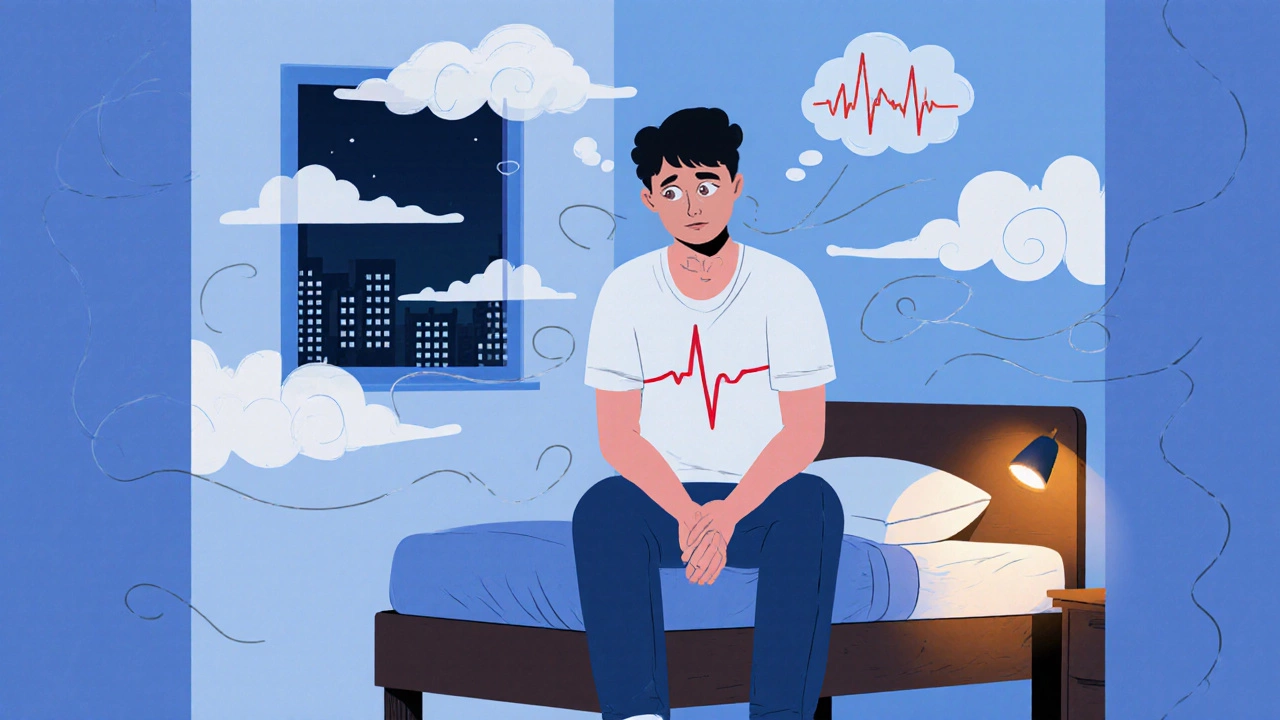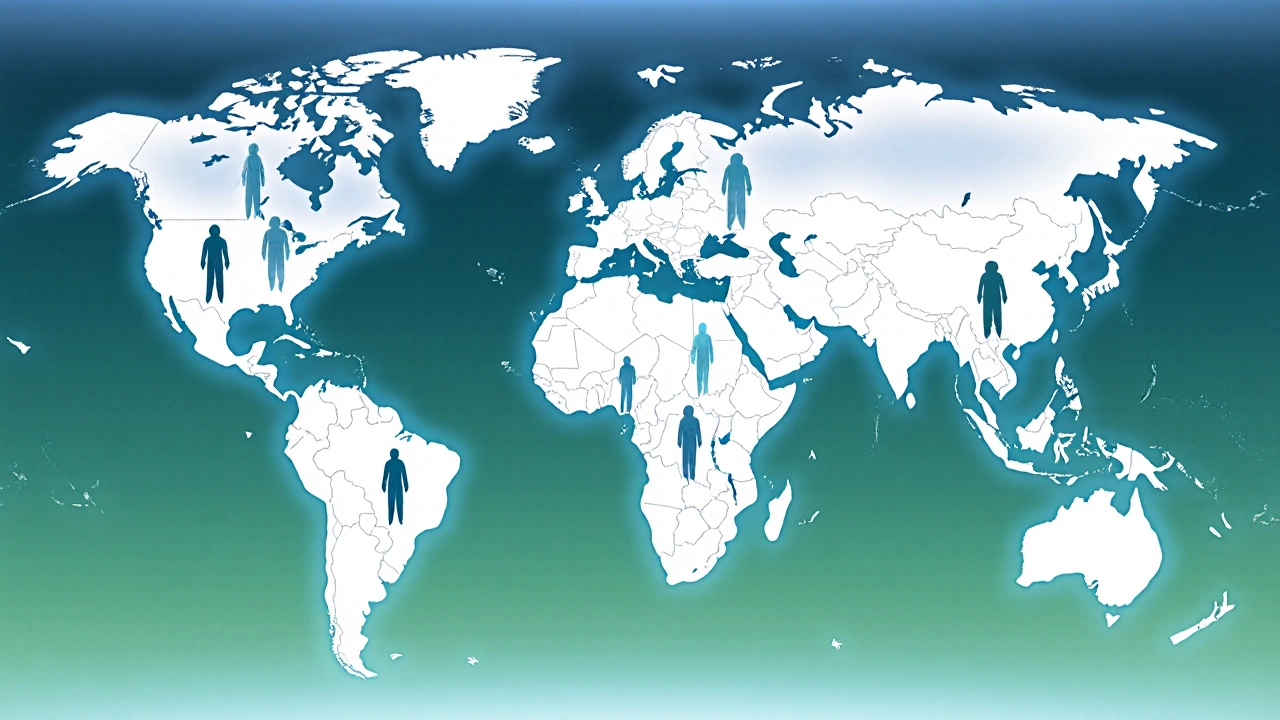Anxiety Symptom Checker
This self-assessment tool is based on WHO guidelines. It helps you understand if your symptoms might indicate anxiety. Remember: this is not a diagnosis. Always consult a healthcare professional for proper evaluation.
Symptom Assessment
Rate how often these symptoms occur over the past 2 weeks. Select the option that best matches your experience.
Key Takeaways
- Anxiety disorders are the #1 most diagnosed mental health condition globally.
- More than 260 million people live with an anxiety disorder, according to the WHO.
- Symptoms include excessive worry, restlessness, muscle tension, and sleep problems.
- Effective treatments range from cognitive‑behavioral therapy (CBT) to medications such as SSRIs.
- Early detection and a supportive environment dramatically improve long‑term outcomes.
What Makes an Anxiety Disorder the Most Diagnosed?
When you hear the phrase most diagnosed mental disorder, the answer that pops up in research reports and public‑health briefings is Anxiety disorders - a group of conditions characterized by persistent, excessive fear or worry that interferes with daily life. The World Health Organization (WHO) lists anxiety disorders ahead of depression and substance‑use disorders in terms of sheer case numbers. Their ubiquity stems from a mix of biological vulnerability, modern‑day stressors, and a diagnostic framework that captures a wide spectrum-from generalized anxiety disorder (GAD) to panic disorder and specific phobias.
Global Prevalence - Numbers That Speak
According to the WHO’s 2024 Global Health Estimates, about 3.6% of the world’s population - roughly 260million people - are living with an anxiety disorder. That makes it the top‑ranked mental health diagnosis across every continent. The International Classification of Diseases (ICD‑11) and the Diagnostic and Statistical Manual of Mental Disorders (DSM‑5) both list anxiety disorders as the most common entry under “mental, behavioural or neurodevelopmental disorders.”

How Anxiety Disorders Compare to Other Common Conditions
While anxiety takes the crown, depression follows closely with an estimated 280million cases (about 3.8% of the global population). Substance‑use disorders affect around 250million people. The table below summarizes the three leading diagnoses as of 2025.
| Disorder | Estimated Cases (Millions) | Typical Age of Onset |
|---|---|---|
| Anxiety disorders | 260 | Late teens-early 30s |
| Depression | 280 | Early 20s-mid‑40s |
| Substance‑use disorder | 250 | Adolescence-30s |
Spotting Anxiety: Common Symptoms and Red Flags
Recognizing anxiety early can prevent it from spiraling. Typical signs include:
- Excessive worry about everyday events that lasts most days for at least six months.
- Restlessness or feeling “on edge.”
- Muscle tension, especially in the neck and shoulders.
- Sleep disturbances - trouble falling asleep or staying asleep.
- Difficulty concentrating, often described as “mind going blank.”
- Physical symptoms like rapid heartbeat, sweating, or gastrointestinal upset.
When these symptoms interfere with work, school, or relationships, a professional evaluation is warranted.
Diagnostic Framework - How Professionals Confirm Anxiety
Clinicians rely on the DSM‑5 criteria, which list specific symptom thresholds for each anxiety subtype. A structured interview, supplemented by questionnaires such as the GAD‑7, helps quantify severity. Importantly, the diagnosis excludes symptoms that are better explained by medical conditions (e.g., hyperthyroidism) or substance use.

Treatment Options - From Talk to Medication
Evidence‑based care for anxiety disorders typically blends psychotherapy and pharmacotherapy.
Cognitive‑Behavioral Therapy (CBT)
The gold‑standard psychotherapy, CBT, teaches patients to challenge irrational thoughts, practice exposure to feared situations, and develop coping skills. Randomized trials show a 60‑70% remission rate after 12‑16 weekly sessions.
Medications
Selective serotonin reuptake inhibitors (SSRIs) like sertraline and escitalopram are first‑line medications. They balance neurotransmitters over several weeks, reducing both emotional and physical anxiety. For acute panic attacks, benzodiazepines may be prescribed short‑term, but clinicians warn about dependence.
Complementary Approaches
Mindfulness‑based stress reduction, regular aerobic exercise, and adequate sleep boost treatment outcomes. While herbal supplements such as kava have anecdotal support, the WHO emphasizes using them under medical supervision due to potential liver toxicity.
Who Can Help? - Navigating the Mental‑Health Workforce
The primary providers for anxiety disorders include:
- Psychiatrist - a medical doctor who can prescribe medication and oversee complex cases.
- Clinical psychologist - specializes in CBT and other evidence‑based therapies.
- Licensed therapist or counselor - can deliver supportive counseling and skills training.
In many countries, primary‑care physicians serve as the first point of contact, screening with tools like the GAD‑7 before referring patients to specialists.
Living with Anxiety - Practical Tips for Daily Life
Even after formal treatment begins, self‑care strategies accelerate recovery:
- Schedule regular physical activity - 30 minutes of brisk walking most days cuts cortisol levels.
- Practice deep‑breathing or progressive muscle relaxation before stressful events.
- Keep a worry journal: write down concerns, then review them after 24hours to assess realism.
- Limit caffeine and alcohol, both of which can amplify anxiety symptoms.
- Stay connected: share feelings with trusted friends or support groups; social buffering reduces perceived threat.
These habits complement professional care and help prevent relapse.
Frequently Asked Questions
Why are anxiety disorders more common than depression?
Anxiety often triggers earlier in life due to evolutionary survival mechanisms, and modern stressors (technology overload, economic uncertainty) amplify these responses. Diagnostic criteria also capture a broader symptom range, leading to higher reported prevalence.
Can children develop anxiety disorders?
Yes. About 7% of children aged 6‑17 meet DSM‑5 criteria for an anxiety disorder. Early‑onset cases often persist into adulthood if left untreated.
Is medication necessary for every person with anxiety?
Not always. Mild to moderate anxiety frequently responds well to CBT, lifestyle changes, and stress‑management techniques. Medication is reserved for moderate‑to‑severe cases or when psychotherapy alone isn’t enough.
How long does treatment usually last?
CBT programs typically run 12‑20 weeks. Medication may be continued for 6‑12 months, with gradual tapering under medical supervision once symptoms are stable.
What role does the WHO play in mental‑health statistics?
The WHO gathers global health data, publishes prevalence estimates, and sets policy guidelines that help countries allocate resources for mental‑health services.

 Does Walking Burn Belly Fat?
Does Walking Burn Belly Fat?
 Understanding Cancer: The Types with the Lowest Survival Rates
Understanding Cancer: The Types with the Lowest Survival Rates
 Pitta Person Traits: What Sets Them Apart in Ayurveda
Pitta Person Traits: What Sets Them Apart in Ayurveda
 Which State Has the Cheapest IVF in the U.S.?
Which State Has the Cheapest IVF in the U.S.?
 Unusual Behaviors Post-Heart Surgery: Understanding the Causes
Unusual Behaviors Post-Heart Surgery: Understanding the Causes